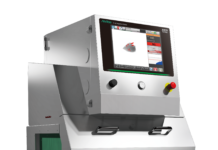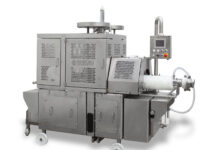Packaging ready-to-eat foods
Another important area is the technologies that minimize food preparation time for consumers. Even though it’s a fact that 75% of adults eat dinner in their own homes, the number of prepared dishes continues to decline. This has been a constant increase in the preference for prepared and frozen dishes that are more convenient and perceived furthermore as being fresher and safer. The guidelines for packaging of ready to eat foods are:
1. use of containers that can be heated in the microwave and taken directly to the table;
2. development of packaging that presents the product well;
3. ease of opening the packaging;
4. relatively low costs associated with packaging materials and the value of the product.
 Packaging technology for prepared meats
Packaging technology for prepared meats
The recent optimization of films that can be used in the microwave is fundamentally important for the market expansion of pre-cooked meats and meats to be cooked in the package.
• Packaging for pre-cooked meats
Currently there are numerous types of packages for precooked meats, consisting of trays overwrapped with barrier film. Usually this type of packaging contains a low oxygen modified atmosphere and must be stored at a controlled temperature and prepared in clean environment to assure an adequate product shelf life.
• Packaging for meats to cook
This type of packaging is the most innovative in the prepared foods market, driven by the development of new film materials and trays that can undergo cooking temperatures up to 90°C so that they can be heated in the oven and served directly at the table in their container.
Technology for safer foods
There are numerous useful technologies available for the reduction of harmful micro-organisms in food, resulting in increased quality and shelf-life. The methods that are considered the most efficient are the post packaging processes and the use of active anti-microbial packaging.
Processes for meat safety
The most effective processes to assure the safety of packaged meat are thermal pasteurization, high pressure processing and irradiation.
• Thermal Pasteurization
Pasteurization of the surface of the meats reduces the risk of the proliferation of harmful micro-organisms. In the majority of cases, the process consists of subjecting the product to temperatures that vary from 70 to 96°C for brief periods ranging from 30 seconds to 10 minutes. Materials that withstand the temperatures have been developed to withstand the temperatures without suffering changes to important marketing characteristics such as high transparency and good adhesion of the ink.
• High Pressure Processing (HPP)
HPP is another useful technology for the reduction of harmful micro-organisms in packaged food and it consists of the exposure of the product to very high pressure levels from 3000 to 7000 atm compared to the normal atmospheric pressure level of 1 atm. High pressure processing is brief and varies from a few seconds to a few minutes. It is used in cases where thermal pasteurization cannot be used, for example in the case of raw cured ham. Packaging materials most appropriate for this process are those that are flexible or semi-rigid so that they can withstand the deformation caused by the high pressure.
• Irradiation
The greatest success so far with this technology has been the eliminate of Escherichia coli O157:H7 from raw beef but more generally the advantages of this technology are its capability to reduce or eliminate a great number of different type of harmful micro-organisms present in meats. The irradiation consists of the exposure of fresh, pre-package meats to gamma rays, x-rays or electromagnetic waves. The process was approved for fresh chicken more than 20 years ago and for raw red meat about ten years ago while the approval has not yet been granted for cooked meats. There are few doubts about the effi ciency of irradiation but there continues to be some resistance and the number of food for which the process has been approved is still limited. Furthermore, the cost of the process is high and the available packaging materials are limited and subject to approval by the U.S. Food and Drug Administration.



